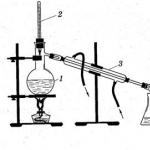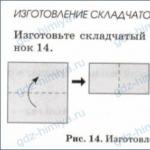Kidney stones in cats or urolithiasis is a chronic disease of cats in which stones and urinary sand (uroliths) form in the urinary tract of animals.
Urolithiasis (UCD) is a chronic disease associated with a metabolic disorder and is accompanied by the formation and deposition of urinary stones of different chemical composition in a cat, or sand in the renal pelvis, urinary ducts, bladder, urethra and leading to a violation of the natural outflow urine.
To have a more complete picture of this disease, let's consider what the urinary system itself is in cats.
The urinary organs of a cat are the most important organs in the body of an animal and are designed to remove from the body (circulatory system) the end products of metabolism in the form of urine.
The kidneys of a cat, forming and releasing urine, remove with it from the body primarily water and metabolic products dissolved in it, especially protein (urea, uric acid, ammonia, creatinine, etc.). Excess mineral salts, as well as foreign substances that enter the cat's body from the outside (drugs, paints, etc.) are excreted in the cat's urine. By removing water, minerals and acidic products from the cat's body, the kidneys thereby regulate water-salt metabolism, support relative constancy of osmotic pressure and active blood reaction. The blood itself is cleared of all kinds of metabolic products with the help of the kidneys. In addition, the kidneys produce hormones that regulate hematopoiesis (hematopoietin) and blood pressure (renin). Therefore, a violation of the functions of the urinary organs leads to serious illness and often to the death of the animal.
Kidneys in cats
kidneys- This is a paired organ of dense consistency, smooth, red-brown in color, covered on the outside with three membranes: fibrous, fatty and serous. The kidneys are oval in shape and are located in the cat's abdominal cavity in the lumbar region on long ligaments. Due to the long ligaments, the kidneys easily change their position (the so-called "wandering kidney"), so only an experienced veterinarian can palpate them.
The kidneys are rather large, smooth, bean-shaped organs, arranged asymmetrically. Near the middle of the inner layer, blood vessels and nerves enter the kidney and the ureter exits. This place is called the kidney gate. On the incision of each kidney, a cortical, or urinary, cerebral, or urinary, and intermediate zone is isolated. The cortical (outer) layer of the kidneys is formed by a multitude of microscopic nephrons, which are the morphofunctional units of the kidneys. The nephron begins with Shumlyansky's capsule, which is a hollow spherical formation lined with a single-layer squamous epithelium. Inside the capsule are glomeruli of capillaries, which are called malpighian. Each glomerulus consists of a significant number of capillary loops (up to 50) formed by an arteriole - an afferent vessel; in the cavity of the capsule, it immediately breaks up into capillary loops, and all of them then merge into the efferent vessel. At the same time, the efferent vessel is already bringing, due to which less blood flows out of the glomerulus than flows in. From the neck of Shumlyansky's capsule, the renal tubule begins, consisting of three sections: 1) proximal (convoluted tubule of the first order), 2) loop of Henley and 3) distal (convoluted tubule of the second order). The convoluted tubule of the first order gives 2-3 bends in the cortical substance, its walls consist of one layer of cubic epithelium, ending with a brush-like border. The diameter of the tubule is about 50µ, the length is up to 50mm. The loop of Henle, starting from the last bend of the convoluted tubule of the first order, gives a descending knee, descending into the medulla, where it makes a loop and rises again along the ascending knee into the cortical layer, where it is continued by the convoluted tubule of the second order, which flows into the collecting tubules. In the second and third sections, the cubic epithelium does not have a brush-like border. This is the terminal section of the nephron.
Urine formation
Physical and chemical properties of urine. Urine in a cat is formed as a result of the complex work of the kidneys. The intensity of urination (diuresis) is influenced by various factors. So, the amount of urine excreted depends on the time of day: during the day there is usually more urine than at night; which is associated with a decrease in the intensity of metabolism in the cat's body during sleep. At night, the total blood pressure decreases somewhat, it also decreases in the kidneys, which leads to a decrease in urination. Urine formation increases after taking a large amount of liquid or succulent feed. Foods rich in proteins also increase diuresis in a cat, since their breakdown products (urea, uric acid, etc.) stimulate the activity of the kidneys. Prolonged physical activity on the body, on the contrary, reduces the amount of urine formed by the kidneys. For a day, adult cats excrete 0.05-0.2 liters of urine for 2-4 times, and in cats, the process of urination occurs more often, because, firstly, cats interrupt other people's "aromatic business cards" with their smell, and secondly, males mark their own territory.
Season: high ambient temperature leads to a decrease, and low, on the contrary, to an increase in urine formation.
The physicochemical properties of urine, its composition are also subject to significant fluctuations, depending mainly on the composition of the feed, the amount of fluid taken, the state of the cat (rest, hunger, satiety, outdoor games, etc.). The study of the composition and properties of urine gives the veterinarian very important information about the processes occurring in the animal's body during metabolism (proteins, carbohydrates, fats), the effect of medicinal substances, and the excretion of inorganic substances. It follows from the foregoing that urinalysis is essential in the study of both healthy and sick animals. Urine in cats has an unpleasant odor, liquid, color from light yellow to yellow. If the urine is colored intense yellow or brown, this indicates any abnormalities in the animal's body. The reaction of urine is weakly acidic (less than 7, but not more than 6). The type of feeding plays an important role in the pH value of urine. Urine density: 1020 -1035.
Chemical composition. Urine contains about 96% water and 4% dry matter. The composition of the dry sediment includes a wide variety of substances of both organic and inorganic origin - mineral salts. Among the organic substances, the main place in the urine is occupied by nitrogenous compounds (urea, uric acid), ammonia - purine bases (adenine, guanine, xanthine, hypoxanthine), creatine, hippuric acid, decay products of proteins neutralized in the liver (indole, phenol, skatole, cresol ). A normal component of urine are pigments: urochrome, urobilin.
Inorganic salts of urine: sodium chloride, potassium salts, sulfate and phosphate salts.
The urine of healthy cats does not contain proteins, as they do not pass through the walls of the capillaries. The rate of protein in the urine can be no more than 0.3 g per liter. The appearance of protein in the urine above is a consequence of either an inflammatory process in the kidneys (pyelonephritis), the development of an infectious process (), anemia,; or a pathological change in the permeability of the capillary walls. The presence of protein in the urine is called albuminuria. If there are hemorrhages in the kidney or urinary tract (as a result of injuries to the ureters and bladder, during the passage of kidney stones), then blood appears in the cat's urine - hematuria (). With some infectious and helminthic diseases () hemoglobin is found in the urine - hemoglobinuria.
Bilirubin is a bile pigment. The appearance of bilirubin in the urine speaks of liver disease (), a violation of the outflow of bile due to blockage of the bile ducts, the development of hemolytic jaundice.
Urine consists of the same elements as blood plasma, but there are big differences between them. So plasma contains 6-8% of proteins, in the urine of healthy animals, including cats, they are not; in the plasma there is sugar (glucose) 0.1-0.16%, in the urine it should not be. If urea in the blood plasma is contained in hundredths of a percent (not higher than 0.05%), then in the urine its amount can reach 4%. Plasma always has a constant slightly alkaline reaction, its pH is 7.36 -7.40; urine reaction is very variable, it can decrease to 6 and increase to 7.
Causes of urolithiasis. Urolithiasis in cats can be caused by two groups of causes, both exogenous (external) and endogenous (internal) origin.
to endogenous causes. veterinary specialists refer to the anatomical features of the urinary tract in a cat. The urethra is quite narrow, which leads to a swirl of urine flow, changing its physico-chemical properties and contributes to the precipitation of mineral deposits in the urine, from which sand and urinary stones can form. With early castration of a cat, the urinary canal takes on an S-shape, in which urine is often retained, provoking urolithiasis.
One of the causes of urolithiasis can be a violation of the hormonal regulation of calcium and phosphorus metabolism by the parathyroid gland, whose hormones (parathyroid hormone and calcitonin) affect the content of calcium and phosphorus ions in the blood and, accordingly, in the urine. With increased production of parathyroid hormone from the skeletal system of the cat, mineral substances are excreted, the excretion of phosphates in the urine increases in the kidneys, as a result, the calcium content in the blood and urine increases.
In diseases of the gastrointestinal tract (gastritis, enterocolitis), the acid-base balance is disturbed due to malabsorption of nutrients, calcium is retained in the body of the animal.
The appearance of kidney stones contribute to various infectious diseases of the urinary tract and the kidneys themselves.
Obesity in cats also leads to the formation of urinary stones.
exogenous reasons. To exogenous causes of urolithiasis in cats, experts include the nature and quality of the cat's nutrition, especially the habitat.
Of the exogenous causes, the onset of urolithiasis is most influenced by the diet that the cat eats. Especially when the diet contains a lot of proteins that are rich in nucleic acids. In the process of protein metabolism in the cat's body, urea is formed, with the breakdown of nucleic acids - uric acid. In the event that you overfeed your cat with protein foods, a large concentration of urea and uric acid accumulates in the body. Which in turn contributes to the formation of sand and urinary stones in the kidneys.
An increased content of minerals in the consumed feed can lead to urinary disease in a cat when owners feed their cat dry food and canned food, which lead to a lack of vitamin B6 in the body.
The formation of kidney stones is greatly influenced by a lack of vitamin A in the diet, as a result of which the cat develops hypovitaminosis A. Pet owners should be aware that vitamin A is found in large quantities in fish oil, egg yolks, caviar, butter, and other dairy products.
Exogenous causes of urolithiasis in cats include the mineral composition of water and soil, especially the content of calcium salts in it. If your cat consumes such hypercalcified water, then an increased concentration of calcium is formed in his urine, which in turn can lead to the formation of uroliths in the kidneys.
If you live in a region with a hot climate, then your cat excretes excess water from the body when breathing from the lungs, with a decrease in the amount of urine excreted by the kidneys. Urine in this case becomes very concentrated, which also contributes to the formation of kidney stones.
Pathogenesis. A change in the acid-base balance in the body of a cat entails a violation of redox processes, mineral metabolism (an increase in the excretion of calcium, phosphorus, magnesium, sodium, potassium, chlorine and sulfur by the kidneys). As a result of all this, inflammatory-dystrophic processes develop in the kidneys, bladder, liver. Changes in the pH and specific gravity of urine lead to disruption of the colloid-crystalline balance in the urine, the precipitation of mucoprotein salts and the formation of urinary stones. The basis of stone formation are mucus, exudate, desquamated epithelial cells, fibrin. Under such conditions, precipitation of crystal salts, protein-like substances, occurs. With the development of urolithiasis in a cat, a decrease in the diameter of the lumen of the ureters occurs, their mucous membrane is injured, and pain impulses go to the central nervous system at the same time. As a result of damage to the urinary tract, their swelling and thickening of the walls, bleeding occur, and when urinating, all this is accompanied by severe pain. Blockage of the urinary tract causes urinary retention in the tubular system of the kidneys, causing hydrostatic pressure in the renal tubules, which in turn inhibits the filtration of blood plasma in the kidneys. This, in turn, leads to the fact that the metabolic products that should be excreted from the cat's body with urine remain in the body of a sick animal. Acute inhibition of urine filtration in the renal glomeruli leads to the development of renal failure in the cat. The retention of poisons in the body causes general intoxication in the cat, up to the development of vomiting and convulsions.
Disease symptoms. If the cat's kidney stones are small and there is no blockage of the urinary tract, then the disease in the cat proceeds without obvious clinical signs, but the results of laboratory tests of urine and blood indicate its occurrence. In such a latent period of the course of urolithiasis, a cat may have symptoms that indicate not only its development, but also allow the veterinarian to determine the localization of the urinary stone.
In a cat, owners notice a decrease in appetite, drowsiness, and depression appear. With the formation of a stone in the renal pelvis, the cat develops symptoms characteristic of pyelitis. Owners sometimes find blood in their urine (hematuria) in their cat, especially after active movements of the cat.
The presence of stones in the bladder in a cat is manifested by frequent urge to urinate and anxiety.
In the event that a kidney stone begins to move along the ureter and causes blockage, we observe obstruction of the ureter. With partial obstruction of the ureters, the owners note that the cat has difficulty urinating. Urination becomes tense, during the toilet the cat sometimes cries. Urination in a cat becomes frequent with the release of a small amount of urine, upon careful examination, blood can be detected in the urine. Additionally, the owners of the cat note a lack of appetite, the appearance of vomiting, the abdominal area becomes painful on palpation.
Diagnosis. The diagnosis of urolithiasis is made in a veterinary clinic based on the collected history of the disease, the clinical picture of the disease and additional diagnostic studies. Additional diagnostic studies include:
- Urinalysis (presence of blood, protein, leukocytes, bacteria and salt crystals).
- Biochemical blood test (may show an increase in renal parameters and electrolyte disturbances).
- OKA blood - can reveal the presence of an inflammatory process in the body of a sick animal (pyelonephritis, cystitis).
- Urine culture (if there is an infection, we determine its type and its sensitivity to antibiotics).
- X-ray of the abdominal cavity - makes it possible to see kidney stones and their location.
- Ultrasound of the abdominal cavity - a veterinarian determines the presence of kidney stones, their number, size.
Excretory urography - allows you to confirm the presence of stones, in addition, with the help of it you can determine the presence of a tumor in the urinary tract, pyelonephritis.
Treatment. For cats that do not have symptoms characteristic of urolithiasis, and also when there are no changes in the urine during the medical examination, there is no need to carry out treatment. If the cat has urolithiasis, treatment is carried out conservatively or surgically.
With urolithiasis, a sick cat is prescribed a special diet that will allow you to maintain a certain pH of urine (between 6 and 6.5) so that kidney stones do not form in the future. With struvite from the diet, we exclude the use of fish, both raw and boiled. A sick cat needs to increase its water intake. A cat can be given chicken meat, an egg without yolk, rice, oatmeal and sour-milk products.
With oxalates, we exclude the liver, kidneys from the diet, reduce the consumption of lactic acid products (cottage cheese, milk). We introduce boiled meat and low-fat varieties of fish into the diet. Or prescribe special therapeutic food for cats with urolithiasis.
Drug treatment of urolithiasis should be aimed at eliminating the very cause of the disease and is very lengthy. As a first aid, veterinarians place a catheter in the cat's urethra in order to establish normal urination.
When diagnosing a large stone in the urogenital tract, veterinary specialists resort to prompt removal of stones, remove the tube through the abdominal cavity directly, while simultaneously cleaning the bladder from stones and sand, sometimes you have to resort to removing the entire kidney.
In no case should you mix natural food with dry, canned food.
In some veterinary clinics, special methods for crushing kidney stones are used in the treatment of urolithiasis.
In the presence of a concomitant urinary tract infection, the cat is prescribed antibacterial agents (baytril, ciftrioxone, cephalotoxime, cobactan, cefkin, etc.), sulfanilamide preparations (furagin, furadonin, furasemide, children's biseptol). To eliminate the side effects of the antibacterial drugs used, enterosorbents, probiotics, etc. are prescribed.
In the event that a cat has severe dehydration, vomiting and kidney failure, veterinary specialists prescribe droppers with drugs or inject 20 ml of Ringer's solution subcutaneously.
To relieve spasms and pains, the cat is injected with antispasmodic drugs - analgin, cystane, no-shpa, baralgin, traumatin, papaverine.
In the presence of blood in the urine, hemostatic drugs are prescribed - dicynone.
Additionally, immunocorrectors can be used for a sick cat - gamavit, anandin, fosprinil, ribotan, immunofan, vestin, roncoleukin, etc.
At home, for the treatment of urolithiasis, an infusion of kidney tea, fresh parsley grass juice or an infusion of its seeds are used, which are given ¼ teaspoon 4 times a day. You can use an infusion of lingonberries 1-2 teaspoons 4-5 times a day. Homeopathic preparations are used - canteren, cat Erwin.
At home, hot baths for 10-15 minutes can be used as an anti-spastic and analgesic for a sick cat. For this purpose, it is convenient to use a bucket at home, in which the cat is lowered to the area of \u200b\u200bthe heart.
Prevention. Prevention of urolithiasis in cats should be based on preventing the formation of kidney stones. The cat should always have fresh water. For a cat, the owners must create normal zoohygienic conditions of detention, there should be no drafts in the room. It is necessary to exclude canned food from the cat's diet, the cat is given food rich in vitamins A, B1, B2, B6. Regularly monitor the live weight of the cat, to prevent its obesity. For neutered cats, use food marked "for neutered". It is not bad to introduce fresh nettles into the cat's diet in the summer, and add dried nettles in the winter. Feed your cat a special diet food - Royal Canin Urinary.
In order not to overlook the development of urolithiasis in a cat, owners should often look into the cuvette and see if there are salt crystals and drops of blood there, pay attention to how often the cat urinates, whether he squeaks during urination.
Urolithiasis has recently become widespread among domestic cats. An important role in the prognosis and treatment of a pet is played by timely diagnosis of the disease. Modern veterinary medicine has an impressive arsenal of tools for the conservative treatment of pathology, so there are quite a few options for treating urolithiasis in cats. And they are selected depending on the individual characteristics of the animal's body, the state of development of the pathology and the factors that provoked its onset. Surgical methods are often used to remove the resulting calculi.
KSD in cats is a multifactorial pathology of metabolism, accompanied by the formation of stones (stones, uroliths) of various mineral composition in the kidneys or bladder, leading to a violation of the natural outflow of urine. Elderly cats, as well as cats, including neutered ones, are more likely to suffer from urolithiasis due to the structural features of the urinary system.
How urolithiasis manifests itself in cats is influenced by many factors: the stage of development of the pathological process, the type of stones, their localization and quantity, age and individual characteristics of the animal. Symptoms to watch out for the owner:
- Decreased appetite, lethargy, dull coat. The pet becomes detached, sleeps a lot, plays little and moves. The cat hides in secluded places, is apathetic.
- Frequent visits to the tray, small portions of urine. The animal literally squeezes urine drop by drop.
- Restless behavior when urinating. The cat can meow, scream plaintively, tense up a lot, take an unnatural position in the tray.
- Urination may occur outside the tray.
- Urine red or brown.
- On palpation of the abdomen, it is not soft, as usual, but hard, painful.
In the later stages of the disease, stones can completely block the ureters, leading to retention and overflow of the bladder. If urination stops completely, then this condition is life-threatening for the pet. Therefore, how to understand that a cat has urolithiasis in the early stages of the development of the disease, every responsible owner should know.
Having found signs of the onset of the disease, it is necessary to take the animal's urine for examination at a veterinary clinic. Laboratory analysis of urine is one of the informative methods for diagnosing urolithiasis in cats. According to the biochemical analysis of urine, the presence of oxalates, uric acid, urea, tripelphosphates, calcium, sodium, magnesium ions is established. These indicators help to establish which stones (oxalates, struvites, cystines) are in the excretory system.
If urine tests have shown that the cat has kidney stones, what to do, then general and biochemical blood tests can be prescribed to confirm the diagnosis of urolithiasis and to exclude other kidney pathologies. An important indicator in this case is creatinine.
One of the most reliable methods for determining urolithiasis in cats is the ultrasound diagnosis of the kidneys and bladder. This painless and uncomplicated method allows you to identify not only large stones, their presence and size, but also fine sand in the kidneys and bladder. In some cases, an x-ray may be ordered. In the arsenal of veterinarians, there are also diagnostic methods such as intravenous excretory urography to detect X-ray negative uroliths. Computed tomography can also be used to make a diagnosis.
Treatment of urolithiasis
The choice of treatment methods for urolithiasis largely depends on the type and size of stones, the stage of development of the disease, the age and general condition of the animal. In the presence of urinary sand, small round stones, struvite or urate calculi, as well as the old age of the pet, a complication of inflammatory processes, conservative treatment is used.
Medical treatment
If the diagnosis is confirmed, the next question to be decided by the veterinarian is what to inject the cat with urolithiasis. Treatment of urolithiasis in cats includes the following steps:
- removal of pain in a pet;
- restoration of normal outflow of urine;
- elimination of dehydration and intoxication;
- anti-inflammatory therapy;
 To relieve the pain syndrome that accompanies an attack, the animal must be prescribed antispasmodic drugs: “No-shpu”, “Spazgan”, “Papaverine”. Of the painkillers used "Novocain", "Lidocaine", "Baralgin". In severe cases, in the clinic, the pet is given a novocaine blockade in the lumbar region.
To relieve the pain syndrome that accompanies an attack, the animal must be prescribed antispasmodic drugs: “No-shpu”, “Spazgan”, “Papaverine”. Of the painkillers used "Novocain", "Lidocaine", "Baralgin". In severe cases, in the clinic, the pet is given a novocaine blockade in the lumbar region.
If the cat does not pass urine, then the veterinarian performs catheterization. Manipulation requires general anesthesia and is carried out in a specialized facility. After installing the catheter and diverting urine, in the presence of sand, the bladder is washed with special solutions. If for some reason the blockage of the ureters cannot be eliminated, then they resort to cystocentesis (bladder puncture).
To remove and prevent inflammation, the animal is given antibiotic therapy. As antimicrobial agents, broad-spectrum drugs are used: Cefazolin, Cobactan, Ceftiofur, Furagin, Cefadroxil and others.
Nephrolytic and anti-inflammatory properties are possessed by "Cyston", "Urodan". If urine is found in the blood, the pet is prescribed hemostatic drugs, for example, Dicinon, Vikasol.
In order to maintain kidney function, Kantaren is prescribed, which activates reparative processes in the kidneys. With symptoms of dehydration and the development of renal failure, the animal is prescribed intravenous injections of solutions of glucose, sodium chloride.
It is impossible to treat urolithiasis in cats without a diet. In each case, the veterinarian recommends one or another therapeutic nutrition scheme, depending on the type of stones. If struvite is found, a diet is prescribed to acidify the urine. Avoid foods rich in calcium. With oxalate stones, the intake of oxalic acid and calcium into the animal's body is reduced. Most often, veterinarians prescribe specialized medicated feed.
Surgery
In the event that conservative treatment does not bring tangible results, with a running pathological process, the presence of large and insoluble oxalate stones, surgical methods of treatment are resorted to. If there is a blockage of the urinary tract, then surgery is the only way to save the pet's life.
In the presence of stones in the bladder, a cystotomy is performed with the removal of insoluble stones and the creation of a urethrostomy in the wide part of the urethra. In case of blockage of the urethra in cats, a perineal cystotomy is performed. In this case, the penis is amputated.

 Cystotomy
Cystotomy In some cases, when finding stones in the ureters, a retropulsion method is used. Its essence lies in the fact that with the help of a special catheter, the stone is washed into the bladder. Then it is emptied and removed by means of cystotomy. The choice of urethrostomy or cystostomy for stone removal usually depends on the size of the stones. Large stones require a more complex operation - cystostomy.
Forecast
The owner of a pet with urolithiasis should understand that this ailment is a lifelong pathology. Options for the development of events depend on many factors. With timely treatment and early diagnosis, the prognosis is usually good. In the event that the treatment occurred in the later stages with blockage of the ureters, the prognosis is cautious. If the animal was admitted to the clinic with urinary retention for more than 3 days, then the situation can be extremely difficult, the assumptions about development will be cautious and rather unfavorable.
Prevention of pathology

 Many diseases are easier to prevent than to treat. This fully applies to urolithiasis. The owner should focus on preventive measures than to treat urolithiasis in cats. Experts advise to adhere to the following recommendations:
Many diseases are easier to prevent than to treat. This fully applies to urolithiasis. The owner should focus on preventive measures than to treat urolithiasis in cats. Experts advise to adhere to the following recommendations:
- feed animals with high-quality premium and super-premium feed;
- do not mix dry food and natural food;
- do not feed the cat food from the table;
- control the drinking regime of the pet;
- water must be filtered or boiled;
- to not allow ;
- keep your pet active;
- prevent hypothermia and overheating of the animal;
- once every six months, undergo ultrasound diagnostics of the kidneys and bladder;
- once every 4 months to take urine for analysis.
Urolithiasis in domestic cats requires constant monitoring of the condition of the animal and regular therapeutic course. The surgical operation only restores the normal outflow of urine, but does not solve the problem in the future. Being a disease associated with metabolic disorders, the disease requires a revision of the pet's lifestyle and constant adjustments to the diet.
Similar articles
Special food for urolithiasis for cats. ... You should not feed a cat with KSD fish and meat soups, canned and dry food, not intended for the treatment of pathology.
Urolithiasis in cats occurs as a result of metabolic disorders and is characterized by the formation of stones, sand in the kidneys and urinary tract, as well as their retention in the lumen of the ureters and urethra. The chemical composition of the stones is mainly represented by urates (salts of uric acid) and phosphates. In its course, there is an acute and chronic form of urolithiasis.
Causes
By and large, scientists have not yet reliably determined what can be the cause of urolithiasis in cats. It is assumed that in most cases the formation of urinary stones is caused by a violation of water-salt metabolism as a result of improper, monotonous feeding and lack of vitamins. There is also an opinion that the constant is one of the leading factors that leads to the formation of stones. Often, when examining animals, the owners admit that they mainly, and often constantly feed their pets with just such feeds. And the latter are usually supersaturated with phosphates (bone meal) - the main substances that contribute to the onset of the disease.
In addition to the monotonous and improper feeding of concentrated feeds, there are other reasons that can directly or indirectly affect the formation of stones in the kidneys and urinary tract:
- microorganisms - staphylococci, streptococci, proteus and others;
- prolonged stagnation of urine - as a result, alkalization occurs, precipitation of salts and the formation of stones;
- medicines, namely their uncontrolled and too frequent use;
- polyhypovitaminosis - insufficient intake of vitamins in the body;
- individual characteristics of the cat's body;
- climatic conditions (according to the same scientists, most often the disease occurs in the North Caucasus, the Urals, the Don, the Volga - this is due to the characteristics of the soil, vegetation and water composition);
- violation of the functions of the endocrine organs - the thyroid gland, gonads, etc.;
- small diameter of the urethra, especially for neutered cats;
- inflammatory processes in the renal pelvis, urinary tract, bladder.
Symptoms
One of the manifestations of urolithiasis can be frequent urination in a cat.The manifestation of the disease directly depends on where the urinary stones are located, as well as on their size, the nature of the surface and mobility. The main signs of urolithiasis in cats include:
- pain when urinating, which is manifested by the anxiety of the animal when visiting the toilet, as well as plaintive sounds;
- frequent urination;
- hematuria, that is, the appearance of blood in the urine (in this case, the urine turns red);
- colic, which can be constant or manifest in sharp attacks (you can understand colic by the cat's anxiety, throwing around the room and meowing).
I would also like to draw attention to the fact that in case of blockage of the urinary tract with urinary stones, the disease may be accompanied by stagnation of urine. Sometimes an animal can die from uremia (poisoning of the body by products of stagnant urine).
The number of stones can vary from one to several hundred. Stones injure the mucous membrane, as a result of which inflammation develops, which can cause diseases of the bladder, kidneys, and purulent urethritis. In the event that the disease process is complicated by pyelitis or pyelonephritis, that is, inflammation of the kidneys, then signs characteristic of these diseases may appear:
- temperature increase;
- weakness, oppression, which can be replaced by anxiety;
- the appearance of pus in the urine, while it becomes cloudy and has an unpleasant odor.
If a cat has noticed at least one of the signs listed above, it is advisable to contact a veterinary specialist. It is not possible to make a diagnosis on your own at home.
In a veterinary clinic, it is necessary to accurately describe the signs that were noticed, to tell in detail about feeding. You will also need to take a urine test of the cat to the laboratory. In some cases, they may offer to do an ultrasound or x-ray.
In the laboratory, the presence in the urine of crystals of uric acid salts, the epithelium of the renal pelvis, and urinary cylinders is usually determined. Based on laboratory data, ultrasound or x-ray results, they make the final diagnosis of "urolithiasis in a cat."
Prevention
Prevention comes down to improving the conditions for feeding and watering the cat.
- Be sure to take care of a varied diet.
- Try to avoid giving monotonous feed and drinking hard water.
- Introduce vitamins into your pet's diet.
- Don't forget to take regular walks.
- You can also sometimes take urine for analysis to the laboratory, where it will be possible to examine the sediment to detect the disease in the early stages.
Treatment
Symptomatic treatment is used to treat urolithiasis in cats. It is advisable to use painkillers, as well as antispasmodics. In rare cases, probing the urethra or even surgical removal of urinary stones may be necessary. The following treatment regimen is usually used:
- antibiotic therapy is recommended to relieve inflammation;
- It may not be superfluous to give the cat medicinal herbs: a decoction of bearberry leaves, parsley root;
- the use of drugs that disinfect the urinary system (Furadonin, Urosulfan, Metronidazole);
- for destruction, removal of stones, sand, Uradon, Cyston are prescribed inside;
- removal of spasm, elimination of pain, colic - for this, No-shpu, Analgin, Baralgin or any other antispasmodics are administered intramuscularly;
- displacement of the stone - usually a solution of novocaine is injected into the urethra and after a while they try to move the stone into the bladder (this manipulation is carried out if the cat has a blockage of the urethra with urinary stones);
- washing the bladder with anti-inflammatory drugs (sodium chloride solution with an antibiotic).
In difficult cases, it is necessary to perform an operation to remove the stones.
KotoDigest
Thank you for subscribing, check your inbox, you should receive an email asking you to confirm your subscription
Urolithiasis in cats is a chronic pathology, expressed in the formation of salt deposits in the form of sand (at the beginning of the disease) or stones (in the later stages). KSD (urolithiasis) can occur in cats at any age.
Causes of the disease
According to statistics, cats are more prone to urolithiasis than cats, and castrated cats form kidney stones more often than non-castrated cats. The reason for this is the underdevelopment of the urethra in an animal whose owners decided to castrate before reaching 6 months.
This does not mean that urolithiasis in neutered cats will develop absolutely for sure. But in a cat with removed testicles, there is a violation of the hormonal background. Mobility decreases, and appetite increases, this can contribute to obesity.
Factors contributing to ICD include:
- fish predominates in the diet of the pet;
- fried food;
- low-quality food (economy class);
- mixing natural and dry food;
- a small amount of liquid;
- overweight animal;
- lack of activity;
- infections (staphylococci, streptococci);
- manifestations of congenital pathologies of the genitourinary system;
- disturbed metabolism;
- heredity.

The opinion that cats that eat exclusively dry food are more prone to illness is wrong. Urolithiasis also affects pets that eat the so-called natural.
What is the danger of urolithiasis
In the urinary canals of a cat, the appearance of uroliths (sand and stones) is observed, which can cause great harm to the pet's health:
- Injure the mucous membrane, cause pain and bleeding.
- They impede the outflow of urine, which provokes acute.
- Contribute to infection and reverse reflux of urine (reflux) into the renal pelvis and tubules, in connection with which an inflammatory process may appear there.
In a cat, urolithiasis, if not properly and timely treated, can lead to death.
What breeds are predisposed to urolithiasis
Veterinarians believe that long-haired and some short-haired cats are more prone to urolithiasis:
- British;
- maine coons;

Since kidney stones in cats are often genetically transmitted, when purchasing a kitten, it would be useful to ask the breeder if stone disease was observed in your pet's ancestors.
Signs of kidney stones in cats
Crystals form in the urinary tract, occupying space in the cavity and reducing the volume of the bladder. Crystalline deposits have sharp edges that constantly irritate living tissue. During urination, the animal tries to get rid of the contents that fill the bladder, while the crystals come out partially and injure the excretory canal.
There comes the next stage of the disease, during which salt deposits move along the urinary tract. If in cats the duct is straight and wider, so that the crystals do not linger in it, then in cats the urethra has an S-shaped bend, in which sediment gradually begins to appear. This leads to complete blockage of the ducts. The animal is unable to void, and urine accumulates in the bladder.
Kidney stones in cats are the result of impaired metabolism, which in most cases is congenital. Urolithiasis in the representatives of the cat world is called nephrolithiasis. The formation of stones begins due to the influence of provoking factors. One of the most common is malnutrition. Nephrolithiasis can develop both in a young cat and in a cat aged 6-8 years. Breed does not depend on the incidence of this disease. More often kidney stones are diagnosed in animals living in cities. Males are more susceptible to nephrolithiasis than female cats.
Underlying factors in the formation of kidney stones in cats:

Cats also have a genetic predisposition to nephrolithiasis. The peculiarities of the climate in the place where the animal lives can also affect the functioning of the kidneys and provoke the formation of stones in them.
According to statistics, kidney stones are more often found in cats that have been spayed. As a result of this procedure, the urinary canal narrows, as a result, urine may periodically linger. Due to the stagnation of urine, the salts present in it begin to settle on the walls of the organ.
Clinical picture of the disease
Signs of nephrolithiasis are not specific, so the pet owner cannot recognize the disease himself. A comprehensive diagnosis is required to make a diagnosis. Urolithiasis in cats can be manifested by the following manifestations:

Nephrolithiasis develops quite quickly. If the owner did not immediately notice changes in the behavior and health of his pet, the disease progresses, the symptomatic picture worsens.
The animal appears to vomit, regardless of the meal. Urine becomes intense red. Due to the stagnation of urine, intoxication of the body occurs. The cat becomes lethargic, constantly lies, refuses to eat.
Diagnostic Measures
At the appointment with the veterinarian, the owner of the cat should describe in detail the existing symptoms, tell how long the condition and behavior of the animal has changed. Diagnosis of kidney stones includes a whole range of activities:
- laboratory analysis of blood and urine;
- if a stone has come out of the urinary canal, its laboratory analysis is carried out;
- ultrasonography;
- x-ray.
To determine the causes of the disease and in order to identify a strain of pathogenic microflora that affected the organs of the urinary system, a bacterial culture of urine is carried out. The analysis determines resistance to certain antibacterial drugs.
The results of the examination will help to prescribe effective drug therapy necessary for the treatment of concomitant infectious diseases.
Features of treatment
The tactics of therapy are selected depending on such factors as the severity of the clinical case, the cause of nephrolithiasis and the condition of the animal. Treatment for kidney stones can be medical or surgical. A mandatory measure is dietary nutrition. 
Therapeutic diet
Nutrition for kidney stones is aimed at maintaining a certain pH level, which prevents the process of further formation of stones. It is necessary to comply with the diet and to prevent relapse.
It is necessary to exclude fresh meat and fish from the daily diet of the animal, it is forbidden to give the pet canned food. Fermented milk products should be present in the daily diet. In pet stores, you can buy special food designed for cats with urolithiasis. The advantage should be given to wet ready-made rations rather than dry ones.
It is important to provide the animal with the correct drinking regimen. The cat should always have a full bowl of water. Water can only be given boiled or filtered, and it is recommended to update it constantly.
Drug treatment of nephrolithiasis
If the stones are small in diameter, specific medications will be prescribed to the animal to dissolve them. In the presence of infectious microflora in the organs of the urinary system, antibiotic therapy is performed. Depending on the severity of the clinical case, antibiotics can be given in tablet form or by injection.
If blood clots are present in the urine, hemostatic spectrum of action drugs are prescribed. To relieve painful symptoms, analgesics or antispasmodics are prescribed.
In the presence of frequent vomiting, diarrhea and dehydration against the background of severe intoxication of the body (in order to prevent dehydration and restore water and electrolyte balance), droppers with saline are prescribed. 
In the absence of positive dynamics from drug treatment or in cases where the stones have a large diameter, and the condition of the animal is critical, the only method of treatment is surgical intervention.
Surgical removal of stones
Surgery is performed by laparoscopy. Large stones are crushed using ultrasound and removed from the organ. Before the operation, allergic tests are carried out for drugs that are used for anesthesia.
Preparation for surgery involves complete starvation of the cat during the day before the surgical procedure. This is necessary in order to prevent nausea and vomiting. If the cat has a full stomach, it is highly likely that while under anesthesia the animal will begin to vomit and may choke on the vomit.
The postoperative period includes wearing a special bandage, following a diet, taking medications for a speedy recovery. The owner needs to provide his pet with complete peace.
Alternative methods of therapy
It is impossible to get rid of kidney stones in an animal using folk methods. Various decoctions and tinctures based on medicinal herbs and products are aimed solely at improving the general condition of the animal, and not at the independent removal of stones. Recommended Recipes:
- parsley juice- Grind well-washed parsley leaves in a blender. Drain the juice and strain through gauze folded in several layers. Reception - three times a day for ¼ teaspoon.
- Cowberry juice- Give after each meal a tablespoon.
- Juice from fresh carrots or strawberries- Reception up to 4 times a day for a tablespoon, strictly on an empty stomach.
- boiled pumpkin, crushed to the state of gruel, mixed in equal proportions with honey. Pumpkin needs to be steamed. Take on an empty stomach 3 to 4 times a day.
These recipes must be used in combination with drug treatment. Juices and pumpkin with honey will enhance the therapeutic effect of drugs, make up for the lack of vitamins, macro- and microelements in the body of a sick cat.
When Treatment Is Not Necessary
Kidney stones can be detected during a routine veterinary examination of the animal. If the size of the formations is small, and the cat does not have any unpleasant symptoms, treatment may not be carried out. This is especially true for older cats, who may not be able to tolerate surgery.
But in such cases, it is necessary to establish control over the condition of the cat, regularly undergoing ultrasound diagnostics and passing laboratory tests. It is important to review the diet and, if necessary, adjust it by adding more vitamin and removing the factors provoking nephrolithiasis.
Prevention of nephrolithiasis
Kidney stones are a common disease in pets. It must be treated in a timely manner, since nephrolithiasis can lead to serious consequences, even death. There are a number of preventive measures, the observance of which will help to significantly reduce the likelihood of pathology.
When purchasing a kitten, it is recommended to immediately contact the veterinarian for a comprehensive examination of his condition and health. The specialist will help not only to examine the kitten, but also to choose the right diet. With a pet you need to engage, play, providing daily physical activity. In order not to miss the moment of formation of kidney stones, it is recommended to take urine and blood tests at least once every six months.


















